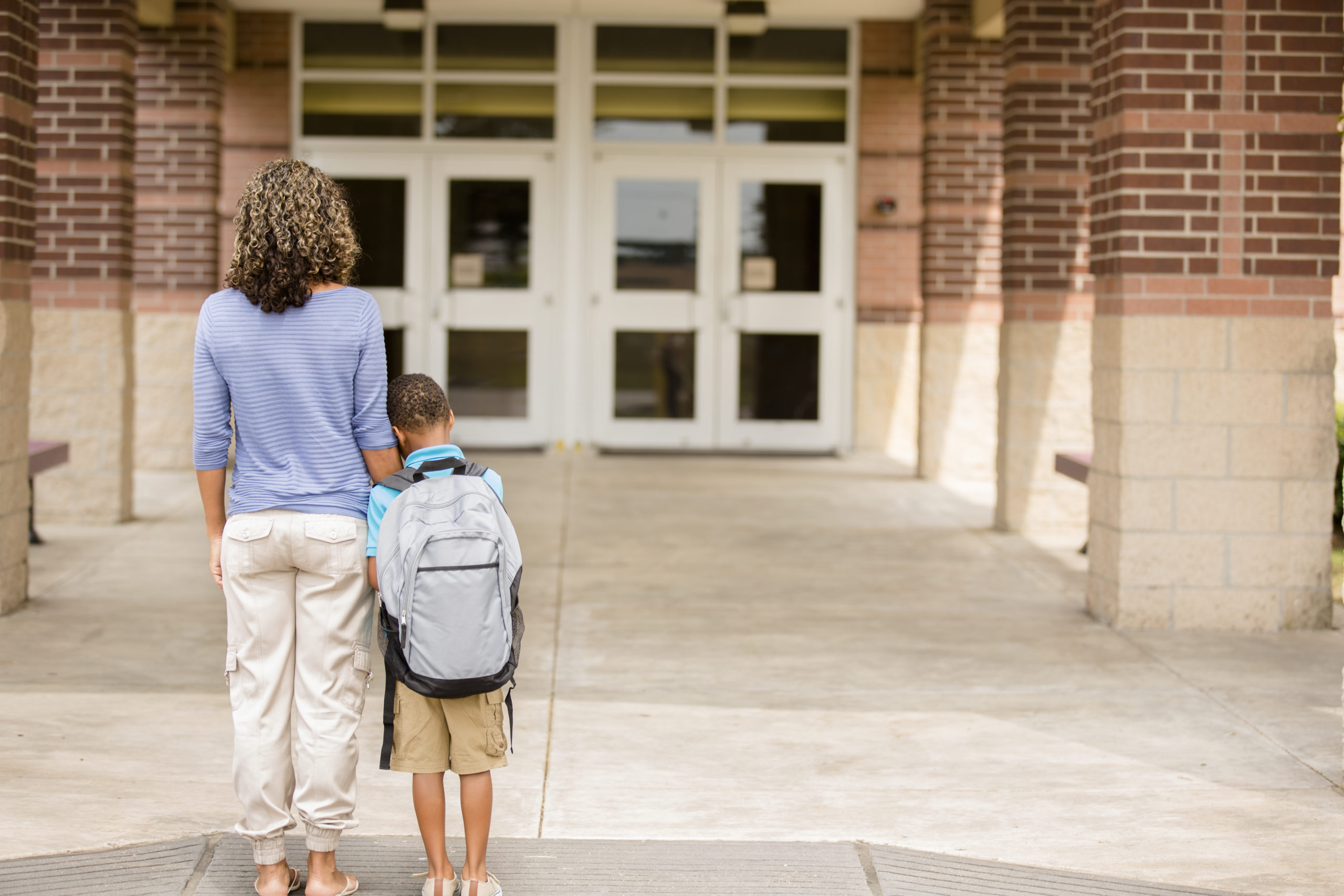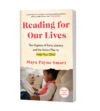I woke up at 3 a.m. on the morning of my daughter’s return to full-time in-person school this year and cracked open Unwinding Anxiety by Dr. Judson Brewer. It seemed like the perfect book to help set the right tone for the long day ahead.
I was anxious because it was my daughter’s first day at a new school in a new state. I was anxious because the school had sent a heads-up email the night before warning that there could be pick-up delays due to a bus driver shortage. I was also anxious because of the pressure I felt to have a great day at work myself. As all parents can attest who’ve labored in months-long distraction with COVID-disrupted childcare, school, and work routines, having eight uninterrupted hours to do your thing is a godsend not to be frittered away.
My daughter had been jittery the night before. She asked me, her human alarm clock, to rouse her at 5 a.m. to make sure she didn’t miss the bus expected at 7:03 a.m. That morning, before she ventured out of the door, she checked and double-checked the list of items to bring to school on the first day. Water bottle. Check! Lunch. Check! Extra masks. Check! And, despite the foreboding email of the night before, our cheerful driver pulled up a few minutes early.
We didn’t speak of it directly that morning, but sending her into an elementary school building full of hundreds of under-12 (and therefore unvaccinated) children is in and of itself a major cause for concern. She’s a super-conscientious kid, and her first day of school recap included the observation that they should let kids out of the cafeteria and onto the playground sooner, to lessen time in an enclosed space with unmasked kids eating. She has a point.
All of that’s to say that if you and your child are feeling a bit nervous amid these early school days, you’re not alone. We’re in it with you, and can offer a few practices that we return to again and again. These practices help us respond well to the worry we feel in the moment and (hopefully) reduce its duration, intensity, and likelihood of return.
Plan your response to anxiety in advance.
The specific circumstances that trigger anxiety in a child (or parent) may vary from day to day, but worry, doubt, and concern tend to be recurring forces in all of our lives. So it just makes good sense to plan our basic response to anxiety in advance, so that we can respond quickly, effectively, and consistently when it shows up. My chosen response, for example, consists of three elements inspired by tidbits I’ve picked up from books and articles, along with my own personal experience of what works.
When I notice that my daughter seems ill-at-ease or worried about some future event, I take a deep breath and tell myself to be a VIP. I love a good acronym, and this one does double-duty. To begin with, it’s a label and reminder for how I want to show up for my daughter: as a very intentional parent. Secondly, it stands for what I need to do to fulfill that aim: value and validate her feelings; investigate and imagine the ways anxiety manifests in her thoughts, body, and behavior; and preserve and predict positive outcomes.
Value and validate feelings.
The first order of business when you observe fear and worry in your child is to acknowledge their feelings and confirm that they’re fine with you. You might tell them that you can handle the outpouring of emotion they’re feeling. They needn’t hold back or censor their fears or feelings on your account and, more importantly, they can feel their feelings and handle them, too.
I usually start by saying, It’s okay to feel what you feel. Don’t try to fight whatever’s coming up for you. Just recognize that it’s there and relax into it. Accept and allow the feelings. This wasn’t always my default response, but years of telling her the opposite (Don’t worry. It’ll be fine.) didn’t work. When you tell a child to quickly turn the page on an emotion, it tends to make them only cling more strongly to it. If she could eliminate anxiety with just the desire to eliminate it, she wouldn’t be anxious and I wouldn’t be writing this post. Rather, I’ve learned that dispelling incessant worry is a process, and it starts with fully acknowledging feelings.
The mindfulness language of awareness and acceptance is very familiar to my daughter, because her dad and I speak it daily. The words, gestures, or actions that you choose to value and validate your child’s feelings will likely be different from mine, adapted to the age, stage, and needs of your child, plus your own unique ways of speaking with them. The point is always to do what works best for your particular child and circumstances, tweaking over time. As author Michael Hyatt puts it, “Everything good in our lives is the result of extensive, exhaustive trial and error.”
Investigate and imagine how anxiety manifests in our thoughts, bodies, and behavior.
The I in my VIP acronym is for both investigation and imagination. After you’ve validated your child’s feelings of uncertainty or worry, prompt them to get curious about their experience of the emotion, by asking them how anxiety shows up for them. Your goal is to help your child become more aware of the thoughts and emotions fueling their worry, so they can begin to change their relationship to them.
When kids become observers of their fears, they create the space to think, feel, and behave differently. As Brewer (the author of Unwinding Anxiety, the book I cracked open so early that first morning of school) puts it, “Simply bringing a kind, curious awareness to those sensations and feelings will help you move from habitually feeling like you have to do something to fix a situation to simply observing your experience, watching the problems lessen and disappear on their own.”
I say things like, How does worry show up for you? What does it feel like in your body? How does it affect your behavior? My daughter once told me that worry felt like “drawing inside my stomach with a pencil.” But sometimes kids can’t easily articulate what they’re feeling. That’s when the imagination part comes in. You can offer up some ideas or observations to help. You might gently ask, Is there a tightness in your stomach? Do you have a headache?
Mind you, the goal of this exercise isn’t to name a litany of ailments, but to model getting curious about feelings and developing a rich vocabulary to describe them. Think quality of exploration and observation versus quantity of issues. Shifting focus to a sensory exploration of the symptoms of your child’s anxiety pulls you out of rumination about the object of your anxiety (the late bus, the new teacher, COVID, etc.). Intentionally observing thoughts and emotions dampens the restless, antsy quality of worry with the calmer, expansive spirit of inquiry.
Attending to their own breath, body, thoughts, and feelings in the moment can be a powerful tool for breaking habitual cycles of anxiety, unlike, say, using a fidget spinner or Pop It! Despite their marketers’ claims, the benefits of toys designed to relocate worries from brains to hands are unsubstantiated. They may calm a child momentarily, but distracting from anxiety is different from unseating it altogether. For the latter, teaching mindfulness practices are our best bet.
Pro tip: Sometimes enjoyment is enough reason to let a kid play with a toy. We don’t have to pile pseudoscience on top.
Preserve and predict positive rewards.
After you’ve validated your child’s feelings and nudged them to get curious and investigate the nature and manifestations of those feelings, be sure to end on a positive note. Cement any positive benefits your child experienced from investigating their feelings by asking what they got out of the exercise. Maybe their stomach feels a little less knotted or they are no longer picking at their cuticles.
Whatever their response, it’s a step toward balancing out the negativity bias that makes us humans accentuate the negative more than the positive. Even if your child says I don’t know or Nothing, you did good work by raising the possibility that observing worry can dissipate it.
I also like to project some positivity into the future by leading my daughter through a visualization or mental walkthrough of the fearful event ahead. Imagine that the bus is pulling up. When the doors open, you can greet the driver with a smile, introduce yourself, and pick out a great spot to sit.
Other times I’ll simply affirm my belief that something good’s about to happen. I think it’s going to be a great day and you’ll meet kids who will become wonderful friends over time. The latter may have a don’t-worry-it-will-be-fine ring to it, but, trust me, it resonates better after the validation and investigation steps happen than when you bring the positivity alone.
VIP is my practice for helping my child with her worries, but you may recall that I opened this post talking about my own anxiety. Sometimes we teach what we most need to learn. So the next time anxiety creeps up for you or your child, start by valuing and validating the feelings (versus ignoring or suppressing them), then take it from there.


